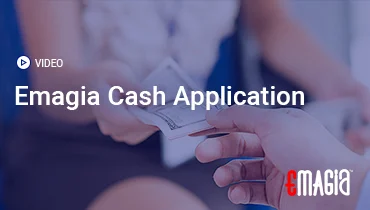In our increasingly interconnected world, the flow of money across borders—known as remittances—plays a pivotal role in supporting families, fueling economies, and facilitating international trade. From an individual sending money to loved ones overseas to a multinational corporation settling invoices with a foreign supplier, these financial transfers are a constant and vital component of the global financial system. However, behind every seamless transaction lies a complex web of regulations, guidelines, and operational logic designed to ensure transparency, prevent illicit activities, and protect consumers and businesses alike.
The term “remittance rule” might evoke different meanings depending on the context. For consumers, it often refers to the legal protections governing international money transfers. For businesses, it can encompass internal policies for applying payments received from customers or the regulatory frameworks for cross-border B2B payments. Regardless of the specific application, understanding these “rules” is not just about compliance; it’s about optimizing financial operations, mitigating risk, and building trust in a digital-first economy.
This comprehensive guide will delve into the multifaceted concept of the remittance rule, exploring its various interpretations and critical importance. We will examine key remittance regulations that govern international money transfers, dissect the internal cash application rules that drive efficient Accounts Receivable, and highlight how adherence to these guidelines ensures security and transparency. Join us as we navigate the intricate landscape of remittance rules, empowering you with the knowledge to manage your financial transfers with precision and confidence.
The Remittance Rule in International Money Transfers: Consumer Protection at its Core
One of the most prominent interpretations of the “remittance rule” comes from the regulatory landscape governing international money transfers, particularly those initiated by consumers.
The Consumer Financial Protection Bureau (CFPB) Remittance Transfer Rule
In the United States, a significant remittance rule is the one implemented by the Consumer Financial Protection Bureau (CFPB), which is part of the Electronic Fund Transfer Act (EFTA) and the Dodd-Frank Act. This rule applies to most electronic money transfers sent by consumers in the U.S. to recipients in other countries, especially by businesses that process more than a certain number of transfers annually. The primary goal of this remittance rule is to protect consumers by ensuring transparency and providing recourse for errors.
Key Requirements of the CFPB Remittance Rule
This federal remittance rule mandates several crucial protections for consumers:
- Clear and Accurate Fee Disclosures: Before a consumer pays for a transfer, providers must clearly disclose all costs, including transfer fees, exchange rates, and any third-party fees. They must also specify the exact amount the recipient will receive in the destination currency. This promotes transparency and allows consumers to compare services.
- Date of Availability: Providers must inform the sender of the estimated delivery time for the funds. This “date of availability” helps recipients plan for urgent expenses.
- Rights to Error Resolution and Disputes: Consumers have the right to dispute errors (e.g., incorrect amounts, delays, funds sent to the wrong recipient) within 180 days. Providers must investigate and resolve the issue within 90 days, potentially offering a refund or re-sending the transfer.
- Cancellation and Refund Rights: Senders typically have a short window (e.g., 30 minutes) to cancel a transfer for a full refund, provided the recipient has not yet received the funds.
- Language Accessibility: All required disclosures must be provided in the same language used to market the service.
- Recordkeeping and Compliance Monitoring: Financial institutions are required to maintain transaction records for several years for regulatory oversight.
These remittance regulations are designed to empower consumers and ensure fair practices in the international money transfer market.
The Remittance Rule in Business Payments: Cash Application and Reconciliation
Beyond consumer protection, the concept of a “remittance rule” is equally vital in the business-to-business (B2B) context, particularly in the realm of cash application and Accounts Receivable (AR).
Cash Application Rules: The Logic of Matching Payments
For businesses, a “remittance rule” often refers to the internal logic or set of criteria used by their cash application systems to match incoming customer payments to outstanding invoices. These cash application rules are crucial for automating the process and minimizing manual intervention. They dictate how the system should interpret remittance advice and apply funds.
Common Cash Application Rules and Logic
Effective cash application rules are designed to handle various payment scenarios:
- Invoice Number Matching: The most fundamental rule. The system looks for exact matches of invoice numbers provided in the remittance advice against open invoices in the AR ledger.
- Amount Matching: Matching payments to invoices based on exact or near-exact amounts, especially when invoice numbers are missing or ambiguous.
- Customer ID Matching: Using the customer’s unique identifier to narrow down potential invoices.
- Date Range Matching: Applying payments to invoices within a specific date range.
- Partial Payment Rules: Defining how to handle partial payments (e.g., apply to the oldest invoice, apply proportionally).
- Deduction Rules: Automatically identifying and coding common deductions (e.g., early payment discounts, returns, promotional allowances) based on specific codes or keywords in the remittance advice.
- Overpayment Rules: Defining how to handle overpayments (e.g., create a credit memo, refund).
- Least-Likely-Paid Rules: More advanced rules might prioritize matching to invoices that are less likely to be paid (e.g., very old invoices) to clear them from the books.
The sophistication of these payment rule sets determines the level of automation and efficiency in cash application.
The Impact of Remittance Rule on Cash Application Efficiency
Well-defined and intelligently applied cash application rules are paramount for:
- Accelerated Cash Flow: Faster matching means cash is recognized and available for use more quickly.
- Reduced Unapplied Cash: Minimizes the amount of cash sitting in suspense accounts due to matching difficulties.
- Improved Accuracy: Reduces human errors associated with manual matching.
- Enhanced Productivity: Frees up cash application teams to focus on exceptions rather than routine matching.
- Better Financial Reporting: Ensures the AR ledger is always up-to-date and accurate.
This internal remittance rule system is a cornerstone of efficient Accounts Receivable management.
Regulatory Remittance Compliance: Beyond Consumer Transfers
Beyond consumer protection, a broader set of remittance regulations and compliance requirements apply to all types of financial transfers, including B2B payments and international remittances.
Anti-Money Laundering (AML) and Know Your Customer (KYC) Rules
These are global remittance regulations designed to prevent financial crime:
- Know Your Customer (KYC): Financial institutions and remittance providers must verify the identity of their customers (both senders and recipients) to ensure they are legitimate and not on any watchlists. This involves collecting and verifying identification documents.
- Anti-Money Laundering (AML): This involves monitoring transactions for suspicious activities (e.g., unusually large transfers, frequent small transfers to avoid reporting thresholds, transfers to high-risk jurisdictions) and reporting them to relevant authorities.
Adherence to AML and KYC is a critical aspect of remittance compliance for any entity involved in money transfers.
Sanctions and Embargoes
Financial institutions must comply with sanctions imposed by governments (e.g., OFAC in the U.S.) that prohibit or restrict transactions with certain countries, entities, or individuals. Screening all parties involved in a remittance against sanctions lists is a mandatory remittance rule.
Data Privacy Regulations (e.g., GDPR, CCPA)
When processing remittances, financial institutions handle sensitive personal and financial data. Compliance with data privacy laws is crucial to protect this information and ensure proper handling and storage. This is an increasingly important remittance rule globally.
Taxation Rules (e.g., TCS in India, Remittance Tax in US)
Governments may impose taxes or tax collection at source (TCS) on certain types of remittances. For example, recent changes in India’s Liberalised Remittance Scheme (LRS) or proposed remittance taxes in the US can impact the net amount received by the recipient. Understanding these tax-related payment rule implications is vital for both senders and recipients.
Local and International Reporting Requirements
Financial institutions are often required to report certain remittance transactions to central banks or other regulatory bodies, especially for large amounts or cross-border transfers. This ensures transparency and helps in monitoring capital flows.
Challenges in Adhering to the Remittance Rule and Regulations
Despite their importance, navigating and adhering to the various remittance rule sets can present significant challenges for businesses and financial institutions.
1. Complexity and Fragmentation of Regulations
The global nature of remittances means dealing with a patchwork of regulations that vary by country, jurisdiction, and even by the type of transfer. Keeping up with constantly evolving remittance regulations and ensuring compliance across multiple regions is a massive undertaking.
2. Data Volume and Diversity
For cash application, the sheer volume of incoming payments and the unstructured nature of remittance advice (e.g., emails, PDFs, web portals) make it difficult to apply cash application rules consistently and efficiently. Missing or ambiguous data leads to exceptions that require manual intervention.
3. Manual Processes and Human Error
Reliance on manual processes for compliance checks (KYC, AML screening) or cash application rule application increases the risk of human error, leading to non-compliance, fraud, or misapplied payments. This is a significant remittance processing challenge.
4. Fraud and Security Threats
Despite regulations, fraudsters constantly evolve their tactics. Businesses must remain vigilant against business email compromise (BEC), invoice fraud, and other scams that can exploit weaknesses in payment processes, even when trying to follow every payment rule.
5. High Operational Costs
The labor and technology required to ensure remittance compliance and efficient cash application can be substantial, especially for organizations with high transaction volumes.
6. Integration Challenges with Legacy Systems
Many organizations struggle to integrate new compliance or cash application solutions with their older, disparate ERP and accounting systems, leading to data silos and hindering end-to-end automation of remittance processing rules.
Leveraging Technology for Enhanced Remittance Rule Adherence
Modern technology, particularly Artificial Intelligence and automation, is revolutionizing how businesses manage and adhere to the remittance rule in all its forms.
1. AI-Powered Automated Cash Application Rules
Advanced cash application solutions leverage AI and Machine Learning to intelligently apply cash application rules and match payments to invoices. These systems can:
- Intelligent Data Capture: Automatically extract remittance details from any format (structured or unstructured).
- Predictive Matching: Use AI to predict the most likely invoice matches even with incomplete data.
- Self-Learning Algorithms: Continuously learn from human corrections and new data, improving matching accuracy over time.
- Automated Deduction Coding: Automatically identify and code deductions based on learned patterns.
This leads to straight-through processing for a high percentage of payments, significantly improving adherence to internal remittance processing rules.
2. RegTech Solutions for Compliance
Regulatory Technology (RegTech) solutions use AI, ML, and big data analytics to automate and streamline compliance processes:
- Automated KYC/AML Screening: Instantly screen customers and transactions against global watchlists, sanctions lists, and politically exposed persons (PEP) databases.
- Real-time Transaction Monitoring: AI algorithms monitor transactions in real-time for suspicious patterns that might indicate money laundering or fraud.
- Automated Reporting: Generate required regulatory reports automatically, reducing manual effort and ensuring timely submission.
- Compliance Analytics: Provide insights into compliance risks and highlight areas for improvement.
These tools help businesses navigate complex remittance regulations with greater ease and accuracy, ensuring robust remittance compliance.
3. Secure Digital Payment Platforms
Modern B2B payment platforms are built with robust security features (encryption, tokenization, multi-factor authentication) and integrate directly with banking networks, ensuring that payments themselves adhere to security payment rule standards and reduce fraud risk.
Emagia: Mastering the Remittance Rule with Autonomous Finance
For enterprises navigating the complexities of financial transfers and seeking to optimize their adherence to every remittance rule, Emagia offers a transformative, AI-powered Autonomous Finance platform. Emagia’s solutions are specifically engineered to intelligentize and automate the entire Order-to-Cash (O2C) cycle, directly impacting how businesses manage and comply with both internal and external remittance guidelines.
Emagia’s Intelligent Cash Application Cloud, powered by GiaCASH AI, revolutionizes the application of internal cash application rules. It leverages cutting-edge Artificial Intelligence and Machine Learning to intelligently ingest remittance data from virtually any source and format – including unstructured email attachments, diverse bank files, web portals, and even scanned images of checks. GiaCASH AI understands the context of the data, accurately extracts all essential remittance details, and intelligently matches payments to invoices with extraordinary precision, even for partial payments or complex deductions. This dramatically reduces the need for manual intervention, ensures high straight-through processing rates, and directly improves adherence to your organization’s remittance processing rules, leading to faster cash application and reduced unapplied cash.
Furthermore, Emagia’s comprehensive platform supports robust remittance compliance by providing clear audit trails, integrating with credit risk management for proactive customer assessment, and ensuring data integrity throughout the financial process. By transforming the entire cash application and collections landscape into a seamless, intelligent, and autonomous function, Emagia empowers businesses to not only efficiently apply their internal remittance rule sets but also to navigate the broader landscape of remittance regulations with greater confidence, achieving superior financial performance and operational agility.
Frequently Asked Questions (FAQs) About the Remittance Rule
What is the Remittance Rule in the context of consumer transfers?
In the context of consumer transfers, the Remittance Rule refers to regulations (like the CFPB’s rule in the US) that protect consumers sending international money transfers. It mandates clear fee disclosures, specifies estimated delivery times, and provides rights for error resolution and cancellations.
What are cash application rules?
Cash application rules are the internal logic or criteria used by a business’s cash application system to match incoming customer payments to outstanding invoices. These rules can be based on invoice numbers, amounts, customer IDs, and specific handling for partial payments or deductions.
Why is remittance compliance important for financial institutions?
Remittance compliance is crucial for financial institutions to prevent financial crimes like money laundering and terrorist financing, adhere to sanctions, protect customer data, and meet regulatory reporting requirements. Non-compliance can lead to severe penalties and reputational damage.
What role does AI play in applying cash application rules?
AI plays a transformative role in applying cash application rules by intelligently extracting data from various remittance formats, using machine learning to predict invoice matches even with incomplete information, and automating the application process. This leads to higher straight-through processing rates and improved efficiency.
Are there specific remittance regulations for B2B payments?
While B2B payments are generally not covered by consumer-focused remittance regulations like the CFPB rule, they are subject to broader financial regulations such as Anti-Money Laundering (AML), Know Your Customer (KYC), sanctions screening, and data privacy laws. Internal remittance processing rules are also critical for B2B.
What is the significance of the “date of availability” in the remittance rule for consumers?
The “date of availability” is a key requirement of the consumer remittance rule that mandates providers to disclose the estimated date when the funds will be available to the recipient. This helps consumers plan and ensures transparency regarding delivery times.
How do automated cash application rules help reduce unapplied cash?
Automated cash application rules help reduce unapplied cash by intelligently matching payments to invoices even with complex or missing remittance data. By automating the extraction and application process, they minimize instances where payments sit unmatched in suspense accounts, freeing up working capital.
Conclusion: The Strategic Imperative of a Modern TMS
The era of paper-based and semi-digital invoicing is rapidly drawing to a close. Customer e-Invoicing stands as a pivotal technology, transforming the way businesses transact and manage their financial flows. By embracing true electronic invoicing, organizations unlock a cascade of benefits, from substantial cost reductions and unparalleled efficiency to improved accuracy, faster payments, and enhanced compliance.
The strategic imperative is clear: to move beyond traditional methods and adopt a robust electronic invoicing system that seamlessly integrates with existing operations. This shift is not merely a technological upgrade; it’s a foundational step toward a fully automated and intelligent Order-to-Cash cycle, empowering finance teams to focus on strategic analysis rather than administrative burdens. By making Customer e-Invoicing a cornerstone of their financial strategy, businesses can secure a competitive edge, foster stronger relationships, and pave the way for a more agile, profitable, and sustainable future.



